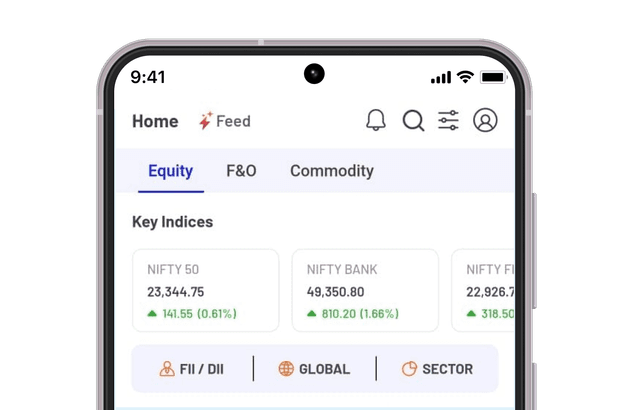Top 10 Intraday Stocks for Today
Last updated on: December 4, 2025
What are intraday stocks?
The best Intraday stocks for today refer to shares that are bought and sold within the same trading day. Traders aim to capitalize on short-term price movements, holding positions for minutes to hours. Unlike long-term investing, intraday trading relies on quick decision-making and technical analysis. It requires a deep understanding of market trends and patterns. The goal is to make profits from price fluctuations without holding onto the stocks overnight.
Who can invest in the best intraday stocks?
The below information explains who can invest in the best intraday stocks to buy today:
Anyone with a Trading Account: To invest in intraday stocks, you need a trading account with a broker. If you have one, you are eligible to participate.
Investors with Knowledge of the Market: Intraday trading involves quick decision-making, so having a basic understanding of the stock market and trading strategies is important.
Traders with Risk Tolerance: Intraday trading can be volatile, so individuals who are comfortable with short-term risk and can handle market fluctuations are better suited.
Investors with Sufficient Capital: You will need enough capital to execute trades and manage the risks. Some brokers also require a minimum margin for intraday trades.
People with Time and Focus: Intraday trading requires attention during market hours, so it is suitable for individuals who can dedicate time and stay focused throughout the trading day.
What are the Advantages of Investing in Intraday Stocks
Below are the advantages of investing in intraday stocks:
Quick Profits: Intraday trading allows you to capitalize on small price movements within a single day, leading to potential quick profits.
No Overnight Risk: Since positions are closed before the market ends, you don't face the risk of overnight market fluctuations affecting your investments.
High Liquidity: Intraday stocks tend to have high trading volumes, making it easier to enter and exit positions without significant price fluctuations.
Leverage Opportunities: Brokers often offer leverage in intraday trading, meaning you can control a larger position with a smaller capital investment, amplifying potential returns.
Frequent Opportunities: The fast-paced nature of intraday trading provides many opportunities within a single day, allowing traders to make multiple trades and diversify their strategies.
What are the risks associated with Intraday Stocks?
Risk associated with intraday stocks are are follows:
High Volatility: Intraday stocks can experience rapid price changes, which means there is a risk of losing a significant amount of money in a very short period.
Leverage Risk: Many intraday traders use margin (borrowed money) to amplify potential returns, but this also increases the risk of greater losses if the trade goes against them.
Emotional Stress: Intraday trading can be stressful because it requires quick decisions. Emotional reactions like fear and greed can lead to poor decision-making and losses.
Market Timing: Predicting short-term market movements accurately is challenging. Mistiming entries or exits can lead to financial losses, even if the overall trend is favorable in the long run.
Transaction Costs: Frequent buying and selling of stocks incur transaction fees (brokerage charges), which can add up quickly and eat into profits or amplify losses.
What are the key metrics to analyze Intraday Stocks for today?
To analyze intraday stocks for today, here are five key metrics to focus on:
Price Action & Trend
Monitor how the stock is moving throughout the day. Look for trends like upward, downward, or sideways movements to identify potential buying or selling opportunities.
Volume
Volume refers to the number of shares being traded. High volume during price movements can indicate strong investor interest, signaling possible trend continuation or reversal.
Support and Resistance Levels:
Relative Strength Index (RSI):
RSI helps determine if a stock is overbought or oversold. A reading above 70 suggests overbought conditions (potential sell signal), while below 30 indicates oversold conditions (potential buy signal).
Moving Averages:
Short-term moving averages like the 5-minute or 15-minute averages help spot trends. When the stock price crosses above or below its moving average, it may indicate momentum shifts.
